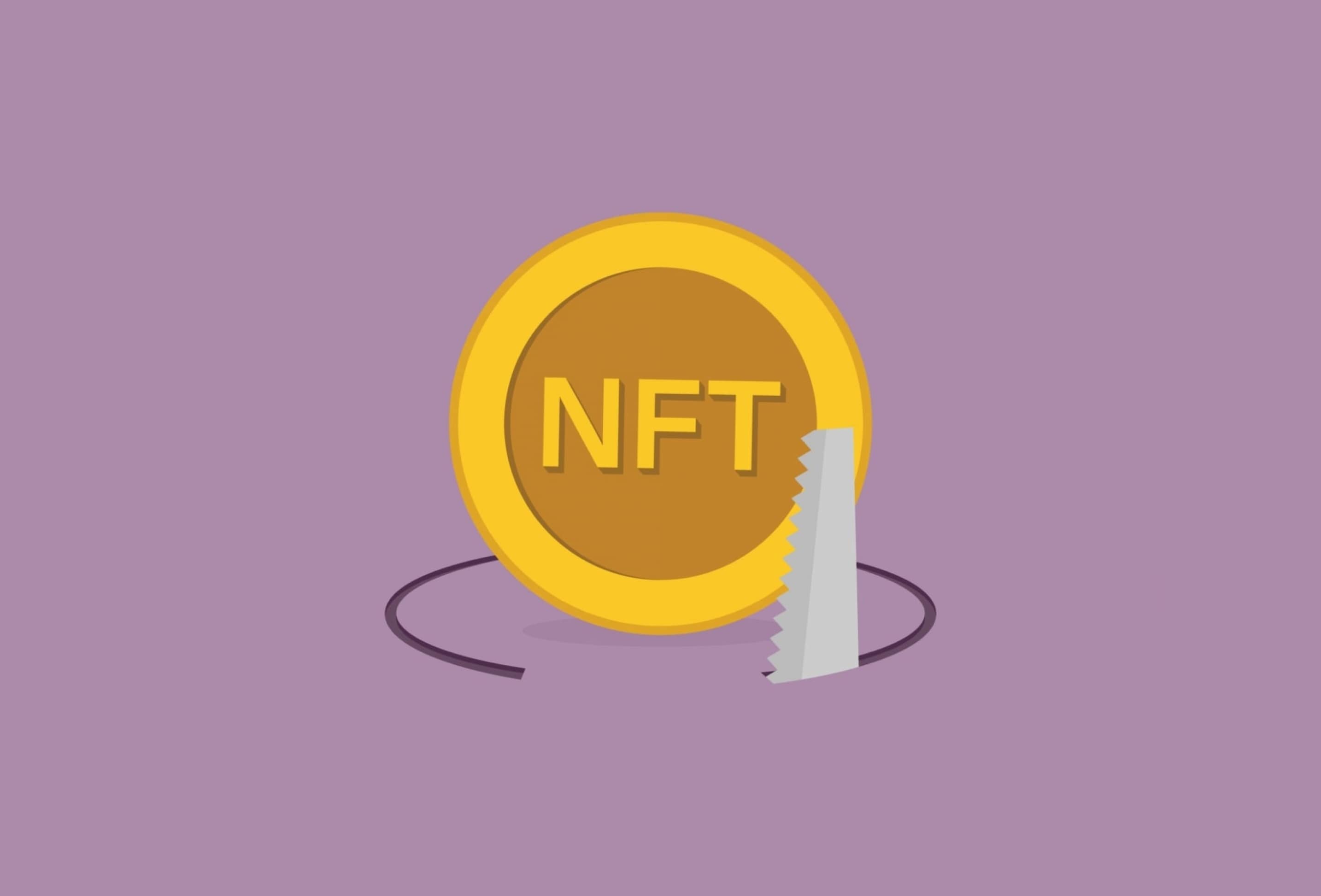From digital art and music to virtual real estate in the digital world, NFTs are gaining unprecedented attention and popularity, bringing in millions of dollars in transactions.
However, as with anything of value, NFTs have attracted the attention of not just artists and collectors but also those with malicious intent.
In an era where our assets are becoming increasingly digital, cybersecurity is more critical than ever. The importance of securing these digital assets cannot be overstated. With stories of high-profile NFT thefts making headlines, it’s clear that the exciting world of NFTs isn’t free of risks. As a result, the safety of these digital treasures has become a pressing concern for their owners.
Whether you’re a seasoned collector, a digital artist, or a newcomer intrigued by the possibilities of NFTs, understanding the basics of NFT security can help you protect your NFT art in this rapidly evolving digital landscape.
This article will discuss the key steps and best practices for securing your digital collectibles and protecting your NFT art.
Risks Associated with NFT Ownership

As exciting as the world of NFTs can be, it’s also full of potential pitfalls and threats that every NFT collector needs to be aware of. Let’s discuss some of these risks:
1. Hacking
As with any digital asset, NFTs are vulnerable to hacking. Hackers might gain unauthorized access to your digital wallet or NFT marketplace account and transfer your NFTs to their own account.
For instance, in early 2022, an NFT collector known as “3F Music” reportedly lost more than $2.2 million worth of NFTs due to a phishing attack.
2. Phishing
Phishing attacks often take the form of emails or messages that look like they’re from a reputable source, such as your digital wallet provider or an NFT marketplace.
The goal is to trick you into providing sensitive information like your password or private key. Given the value of NFTs, it’s no surprise that phishers are increasingly targeting NFT arts.
3. Fraudulent Listings
Scammers may create fraudulent listings of NFTs, copying the artwork of legitimate NFTs, and offering them for sale.
Buyers who fall for these scams end up paying for an NFT that’s worthless because it’s not the original one. For example, the NFT marketplace OpenSea has had to deal with numerous cases of such fraudulent listings.
These risks underline the importance of vigilance when dealing with NFTs. NFT collectors should prioritize security and exercise due diligence to verify the authenticity of NFTs and the credibility of sellers.
How to Protect your NFT Art: Security Measures for NFT Owners
After investing in NFTs, it is necessary to implement strong security measures to protect your NFT art. Here are several key steps that NFT owners can take to safeguard their assets:
1. Use Secure Wallets:
A digital wallet is where you store your NFTs. Not all wallets are created equal, though. Choosing a secure and reputable wallet is essential for safeguarding your assets. Wallets like Metamask, Trust Wallet, and Coinbase Wallet are among the most used in the NFT space, thanks to their robust security measures and user-friendly interfaces.
2. Safekeeping of Private Keys:
Your private keys are essentially the keys to your digital wallet. If someone gains access to your private keys, they can access your wallet and transfer your NFTs. It’s crucial that you keep your private keys secure and never share them with anyone. Writing down your private key and storing it in a secure place can help keep it safe.
3. Using Trusted Platforms for Transactions:
Conducting transactions on trusted NFT marketplaces can help mitigate the risk of scams. Platforms such as OpenSea, Rarible, and Foundation have established strong reputations and implement security measures to protect their users.
4. Implementing Two-Factor Authentication:
Two-factor authentication (2FA) is a security measure that requires two types of identification before granting access to an account. This could be a combination of something you know (like a password), something you have (like a mobile device to receive a verification code), or something you are (like a fingerprint).
Enabling 2FA on your digital wallet and any NFT marketplaces you use adds an extra layer of security that can deter unauthorized access.
5. Creating Secure Passwords:
Creating strong, unique passwords for your digital wallet and NFT marketplace accounts is another crucial security measure. Avoid using easily guessed information like birthdays or names. Instead, use a combination of uppercase and lowercase letters, numbers, and symbols.
Consider using a reputable password manager to generate and securely store complex passwords.
By taking these essential steps, NFT owners can significantly enhance the security of their NFT art and gain greater confidence and peace of mind.
How to Identify Fraudulent NFT Listings

As the NFT market continues to surge, fraudulent listings have become an increasing concern. It’s essential for potential buyers to be aware of this risk and take the necessary steps to avoid falling victim to such scams.
Here’s how to identify and avoid fraudulent NFT listings:
1. Verify the Authenticity of the NFT
The authenticity of an NFT is closely tied to its value. The unique metadata and transaction history of an NFT are recorded on the blockchain and can be used to verify its authenticity.
Before making a purchase, verify that the NFT is being sold by the original creator or a legitimate owner. Many NFT marketplaces provide tools to view the provenance of an NFT.
2. Check the Seller’s Reputation
Always investigate the seller’s reputation before engaging in a transaction. Look at their past transactions and interactions on the platform. Be cautious of sellers with little or no transaction history.
It’s a good idea to engage with sellers via the platform’s messaging system and ask any questions you may have about the NFT.
3. Be Skeptical of Too-Good-To-Be-True Listings
If a deal seems too good to be true, it probably is. Fraudsters often lure victims by listing valuable NFTs at significantly lower prices. Always do your due diligence and research the current market prices of similar NFTs before making a purchase.
4. Use Secure and Reputable NFT Marketplaces
Conduct your transactions on reputable NFT marketplaces that have security measures in place to protect their users from scams. Such platforms may offer buyer protection and provide a safer trading environment.
It’s crucial to remember that the onus of verifying the authenticity of NFTs and the reputation of sellers largely falls on the buyer. So, always tread carefully and take your time when buying NFTs.
Protecting NFTs Against Phishing and Hacking
The high-value nature of NFTs makes them attractive targets for phishing and hacking attempts. Here are key measures NFT owners can take to protect themselves:
1. Secure Networks:
Always use a secure and private network when dealing with your NFTs. Public Wi-Fi networks can be vulnerable to attacks, making them unsafe for transactions or accessing your digital wallet. Using a VPN can add an extra layer of security.
2. Avoid Suspicious Links:
Phishers often use links in emails, direct messages, or on social media platforms to lure victims to malicious websites. These sites often mimic the interface of familiar platforms and trick you into entering your login credentials. Always be skeptical of unsolicited links and double-check the URL to ensure it’s the legitimate website before entering any information.
3. Be Cautious of Emails or Messages Requesting Sensitive Information:
Be wary of any communication that asks for sensitive information like your private keys or wallet password. Reputable platforms will never ask you for this information. If you receive such a request, it’s a strong indication of a phishing attempt.
By understanding the common techniques used by phishers and hackers and taking these precautions, NFT owners can better protect themselves and their digital assets. It’s a worthwhile investment of time and effort to ensure the security of your prized NFTs.
Related Posts:
- NFTs And Their Role In The Future Of Gaming
- Crypto Scam Alert: Stay Away from Fake BLUR Airdrop Websites
- Don’t Get Hacked: Tips to Protect Your Cryptocurrency
